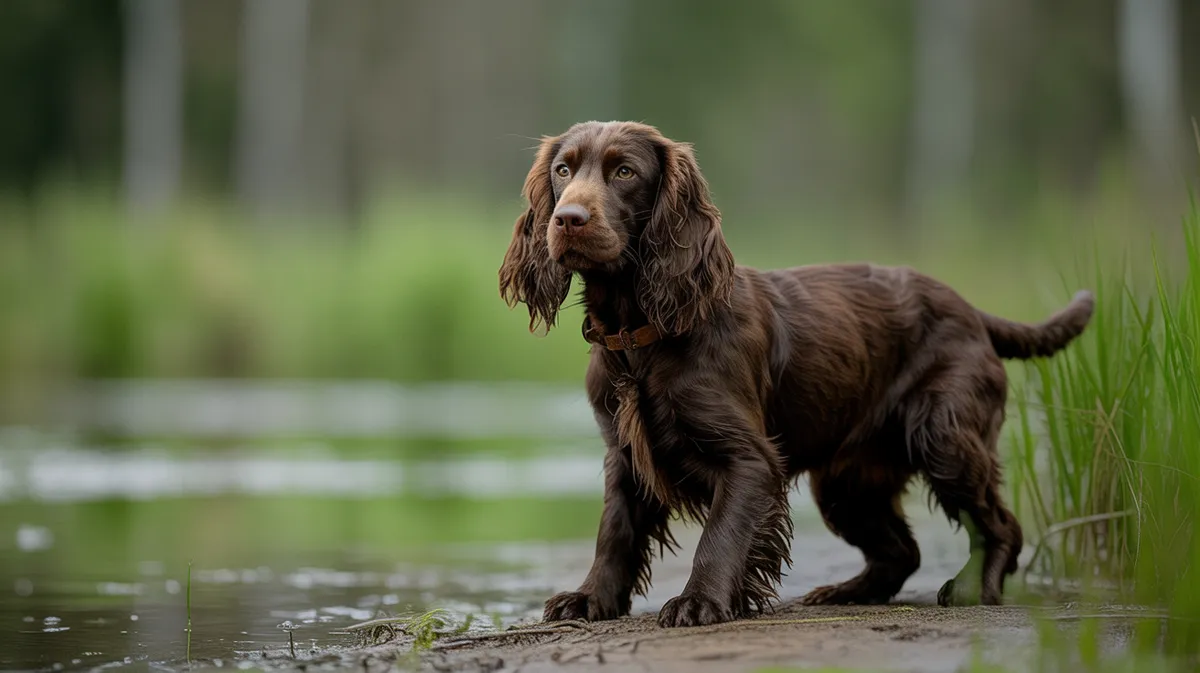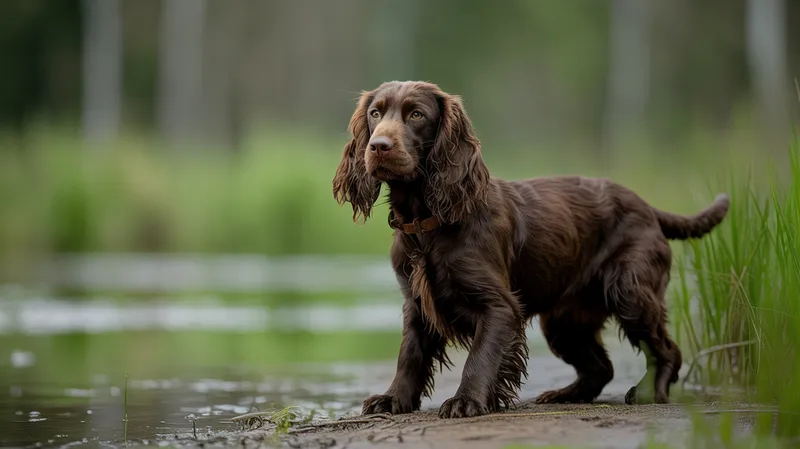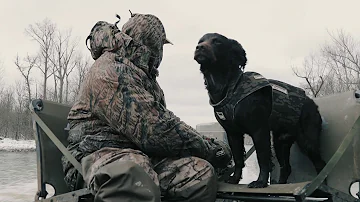
Boykin Spaniel
Canis lupus familiaris

Meet the Boykin Spaniel
The Boykin Spaniel is a medium-sized dog breed developed in South Carolina, USA, primarily as a hunting companion skilled in retrieving game from both land and water. Recognizable by its rich, liver-colored coat and expressive amber eyes, the Boykin Spaniel is highly valued for its intelligence, agility, and friendly temperament. This breed is especially known for its adaptability in various environments, making it a popular family pet as well as a reliable working dog. Boykin Spaniels are energetic, eager to please, and require regular exercise and mental stimulation to stay happy and healthy.
Classification
Mammal
Habitat
Forests and wetlands near freshwater lakes and rivers
Diet
Omnivore
Lifespan
10-15 years
Conservation
Least Concern
Weight
25-40 lbs (11-18 kg)
📖Fascinating Facts
State Dog
The Boykin Spaniel was designated the official state dog of South Carolina in 1985.
Expert Swimmer
Boykin Spaniels have webbed feet, making them exceptionally adept at swimming and retrieving game from water.
Versatile Hunter
Originally bred for turkey and waterfowl hunting, Boykin Spaniels are skilled at working both on land and in water.
📋Detailed Description
The Boykin Spaniel is a compact, medium-sized sporting dog, typically weighing between 25 and 40 pounds (11–18 kg) and standing 14 to 18 inches (36–46 cm) at the shoulder. Its physique is well-balanced, with a deep chest, strong limbs, and webbed feet that enhance its swimming ability. The breed's coat is of medium length, ranging from straight to moderately curly, and is water-resistant, providing protection in wetland environments. The rich liver, chocolate, or dark brown coloration is distinctive, often accompanied by amber or yellowish eyes that convey alertness and intelligence. Boykin Spaniels possess a keen sense of smell and acute hearing, which, combined with their agility, make them exceptional at flushing and retrieving game in dense cover or water. Social by nature, they form strong bonds with their human families and are known for their gentle disposition with children and other pets. Their energy levels are high, necessitating regular exercise and mental stimulation to prevent boredom-related behaviors. In the field, they demonstrate remarkable trainability and responsiveness to commands, making them versatile for various hunting and companion roles. The breed's adaptability extends to both rural and suburban environments, provided their physical and psychological needs are met.
💡 Did you know?
A stray brown spaniel named 'Dumpy' is credited as the foundation dog for the entire Boykin Spaniel breed.
🔬Research & Sources
Wikipedia Summary
The Boykin Spaniel is a medium-sized breed of dog, a Spaniel bred for hunting wild turkeys and ducks in the Wateree River Swamp of South Carolina, in the United States. It is the state dog of South Carolina, where it was discovered and further developed by hunters in the early through mid 1900s. September 1 is Boykin Spaniel Day in South Carolina, originally established in 1984.
Last Modified: 5/31/2025
🎭Behavior & Social Structure
Boykin Spaniels are highly energetic and thrive on activity, displaying a strong work ethic and eagerness to please. In hunting contexts, they exhibit classic spaniel behaviors: quartering the field, flushing game, and retrieving both on land and in water. Their webbed toes and muscular build enable efficient swimming, even in swift currents or marshy terrain. At home, they are affectionate, sociable, and often seek close contact with family members. They are known for their intelligence and problem-solving skills, which can manifest in creative play or, if under-stimulated, mischievous behavior. Boykins are generally friendly with other dogs and can adapt well to multi-pet households. Their alertness and moderate vocalization make them effective watchdogs without excessive barking. Daily routines should include structured exercise, such as long walks, swimming, or fetch, as well as mental challenges like scent games or obedience training.
👶Reproduction & Life Cycle
Boykin Spaniels reach sexual maturity around 8 to 12 months of age, though responsible breeding typically occurs after 18 months to ensure physical and behavioral maturity. The breed is monoestrous, with females coming into heat approximately twice per year. The gestation period averages 63 days. Litter sizes range from 5 to 8 puppies, with neonatal care provided primarily by the dam. Puppies are born blind and deaf, opening their eyes at around 10–14 days. Breeders emphasize early socialization and exposure to various stimuli to foster the breed's hallmark temperament. Weaning occurs at 4–6 weeks, and puppies are generally ready for adoption at 8–10 weeks. Responsible breeders conduct health screenings for inherited conditions such as hip dysplasia, eye disorders, and exercise-induced collapse.
🛡️Adaptations & Survival
The Boykin Spaniel exhibits several adaptations for its original role as a versatile hunting companion in the wetlands of South Carolina. Its medium size allows for easy transport in small boats, while webbed feet and a water-resistant double coat facilitate efficient swimming and retrieval in aquatic environments. The breed's keen olfactory sense and acute hearing are specialized for detecting and flushing game in dense vegetation. Its intelligence and high trainability are evolutionary advantages for working closely with humans in complex hunting scenarios. The Boykin's stamina and muscular build support prolonged activity in challenging terrain. Socially, the breed's cooperative nature and strong human bonding enhance its effectiveness as both a working and companion animal.
📚Research Sources
🎨Cultural Significance
The Boykin Spaniel holds a unique place in South Carolina's cultural heritage, recognized as the official state dog since 1985. Its development is closely tied to the region's hunting traditions, particularly for wild turkey and waterfowl in the Wateree River Swamp. The breed is celebrated annually on Boykin Spaniel Day (September 1) and features prominently in local festivals and sporting events. The Boykin is affectionately nicknamed 'Swamp Poodle' and 'Little Brown Dog,' reflecting both its appearance and its reputation as a spirited, reliable companion. Beyond hunting, Boykin Spaniels participate in therapy work, search and rescue, and competitive canine sports, further embedding them in American dog culture.
🔬Recent Research & Discoveries
Recent genetic studies have focused on identifying markers for inherited diseases prevalent in the breed, such as EIC and hip dysplasia, to inform breeding decisions and improve overall health. Behavioral research highlights the Boykin's problem-solving abilities and adaptability, supporting their use in service and therapy roles. Ongoing studies examine the breed's olfactory capabilities for scent detection tasks, including wildlife conservation and search and rescue. The Boykin Spaniel Society and veterinary institutions collaborate on longitudinal health surveys to monitor population health trends and inform best practices for breeders and owners.
🎥Wildlife Videos

Understanding the Boykin Spaniel (A Valley Way Film)
Seven years ago I saw my first Boykin Spaniel in downtown Auburn, Alabama. Since then, I am consistently told that Boykin's are ...
Valley Way Boykins

Boykin Spaniel History - Turkey Hunting with a Dog
This Hunting Dog Confidential Magazine story features the uniquely American history of the Boykin Spaniel and its development ...
Project Upland Magazine

Wildlife Stories: Love is in the Wild | SPECIAL | Free Documentary Nature
Wildlife Stories: Love is in the Wild | Special | Free Documentary Nature Watch 'Wildlife Stories: Talking to Survive' here: ...
Free Documentary - Nature

Wildlife's Rebirth - A True Natural Treasure | Free Documentary Nature
Wildlife's Rebirth in the Old Mine | Wildlife Documentary Watch 'Wild Canada - Nature's Untamed Beauty | Full Series' here: ...
Free Documentary - Nature

David Attenborough | Nature Documentary To Fall Asleep To (ai)
"Life on Earth" is your gateway to the breathtaking world of wildlife and natural wonders. Through captivating documentaries, we ...
Life on Earth - David Attenborough

Secrets of the Outback | Wild Australia in 4K | Wildlife Nature Documentary
To many, Australia's Outback seems barren and inhospitable — a vast, sun-scorched wilderness with little life to offer. But look ...
Into the Wild Films
🌍Habitat Information
The Boykin Spaniel typically inhabits Forests and wetlands near freshwater lakes and rivers environments. Boykin Spaniels have adapted to their environments with specialized features and behaviors.
Primary Habitat:
Forests and wetlands near freshwater lakes and rivers
More detailed habitat information will be available soon.
🛡️Conservation Status
The Boykin Spaniel is currently classified as Least Concern. Conservation efforts are crucial for preserving this species for future generations.
Common Threats:
- 🏠Habitat loss and fragmentation
- 🌡️Climate change impacts
- 🎯Hunting and poaching
- 🏭Human-wildlife conflict
⚠️Threats & Conservation Challenges
As a domesticated breed, the Boykin Spaniel does not face natural predation threats, but it is susceptible to several health challenges. Genetic disorders such as hip dysplasia, juvenile cataracts, and exercise-induced collapse (EIC) are of particular concern. Overbreeding and lack of genetic diversity can exacerbate these issues. The breed's popularity has led to increased demand, sometimes resulting in irresponsible breeding practices. Environmental threats include exposure to tick-borne diseases and waterborne pathogens during fieldwork. Conservation efforts focus on maintaining breed health through responsible breeding, genetic screening, and education. Population trends are stable, with the breed's status classified as 'Least Concern' due to its robust numbers and active breed organizations.
🔬Scientific Classification
Scientific Name
Canis lupus familiaris
Classification Hierarchy
🔍 About Taxonomic Classification
Taxonomic classification is a hierarchical system used by scientists to classify and organize living organisms based on shared characteristics and evolutionary relationships.
The system moves from broad categories (Kingdom) to increasingly specific ones, with each animal's scientific name typically consisting of its Genus and species.
📝Community Notes
Share your observations and insights about the Boykin Spaniel with our community of wildlife enthusiasts.
Join Our Community
Sign in to share your observations and connect with fellow wildlife enthusiasts.
Sign In to ContributeNo community notes yet
Be the first to share your observations about the Boykin Spaniel!
Explore Boykin Spaniel
Select a tab above to learn more about this amazing animal.
📸Photo Gallery
No photos available for this animal yet.
🌟Discover More Wildlife
Continue your journey of discovery with more fascinating animals from our database
